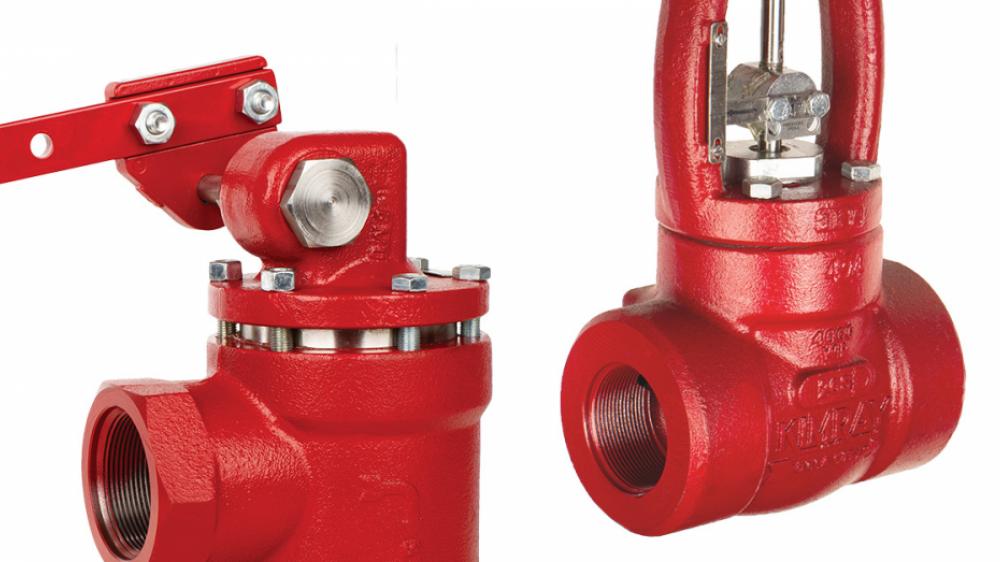Efficient Control Valves: Key Components for Effective System Monitoring
Efficient Control Valves: Key Components for Effective System Monitoring
Blog Article

Maximize Energy Financial Savings and Convenience With Advanced Structure Automation Controls
In the realm of modern-day style and facility administration, the assimilation of advanced structure automation manages stands as a pivotal advancement. By harnessing the power of automation, buildings can adapt, respond, and develop in means that were as soon as unthinkable.
Energy Performance Advantages
Energy effectiveness benefits can substantially reduce energy usage and operational expenses in buildings. By executing energy-efficient techniques and innovations, structure owners and operators can attain substantial savings while likewise contributing to ecological sustainability. Among the main benefits of enhancing energy effectiveness in structures is the decrease of utility expenses. Energy-efficient systems, such as sophisticated building automation controls, can enhance making use of resources like heating, air conditioning, and lighting, bring about reduced power costs in time.
Furthermore, enhanced energy effectiveness can prolong the life-span of structure devices and systems. By running much more efficiently, HVAC systems, lighting fixtures, and other building elements experience less deterioration, resulting in minimized maintenance and substitute costs. Additionally, energy-efficient structures often regulate greater property values and rental prices, offering long-lasting economic benefits to owners.
In addition, power performance can improve passenger convenience and performance. Properly managed indoor settings with optimal lighting and thermal conditions produce an even more conducive and positive office, bring about improved staff member contentment and performance. In general, the energy efficiency benefits related to innovative building automation controls are diverse, incorporating cost financial savings, environmental stewardship, and passenger wellness.
Enhanced Comfort Control
Enhancing comfort control in building atmospheres requires an innovative combination of innovative automation systems for ideal resident health. By utilizing innovative structure automation controls, facilities can customize the interior setting to fulfill the specific requirements and preferences of owners. These systems make it possible for exact policy of air flow, illumination, and temperature, producing a comfy and productive ambience. Owner complete satisfaction and performance are closely linked to thermal convenience, making it necessary to have systems in position that can adjust to transforming conditions in real-time.
Improved comfort control exceeds fundamental temperature level modifications. It includes features such as tailored settings, occupancy sensors, and all-natural light usage to create a dynamic and responsive setting. By integrating these sophisticated controls, structures can not just boost comfort however also improve energy efficiency by maximizing system procedures based upon actual occupancy and use patterns. Inevitably, prioritizing resident convenience via sophisticated automation systems causes a more enjoyable and healthier interior atmosphere.
Functional Effectiveness Improvements

Additionally, the implementation of real-time monitoring and analytics tools enables structure operators to recognize energy inadequacies and operational abnormalities immediately. By continually keeping an eye on power use patterns and system efficiency metrics, changes can be made in real-time to maximize energy intake and guarantee peak operational performance. control valves. Additionally, including demand feedback approaches right into building automation controls can better enhance operational efficiency site web by dynamically readjusting energy use based on grid problems and rates signals
Indoor Climate Optimization
Reliable interior climate optimization is a basic facet of structure automation controls, making certain passengers' convenience and well-being while optimizing power financial savings. By making use of sophisticated sensors and controls, constructing automation systems can constantly check and readjust temperature, moisture degrees, air quality, and air flow to create an ideal interior atmosphere. Maintaining constant and comfortable conditions not just improves occupant satisfaction but likewise improves productivity and general wellness.
Interior climate optimization likewise plays a critical function in energy performance. By fine-tuning air conditioning, heating, and air flow systems based upon real-time information and tenancy patterns, building automation controls can dramatically reduce power usage - control valves. Carrying out methods such as demand-controlled air flow and thermal zoning can help decrease power waste while ensuring that each location of the structure gets the essential conditioning.

Lasting Setting Development
Building automation controls not just maximize interior climate conditions for energy efficiency and resident convenience however additionally lay the foundation for developing a sustainable environment through tactical management of sources and systems. By integrating sophisticated structure automation innovations, such as sensing units, actuators, and intelligent software, facilities can keep an eye on and change energy use in real-time to minimize waste and reduce their carbon impact. These systems allow predictive maintenance, recognizing prospective problems prior to they rise and optimizing devices efficiency to improve durability and efficiency.
Moreover, sustainable atmosphere development expands beyond energy monitoring to incorporate water conservation, waste decrease, and indoor air high quality see here improvement. Building automation controls can manage water use, discover leaks, and make certain appropriate garbage disposal methods, adding to overall sustainability initiatives. Additionally, by controlling and monitoring air flow and purification systems, these innovations improve owner wellness and productivity while decreasing power intake related to HVAC operations.
Conclusion
Finally, progressed structure automation regulates offer significant benefits in terms of energy cost savings, convenience control, functional performance, interior environment optimization, and creating a lasting setting. By applying these controls, structures can achieve optimal performance while minimizing power intake and enhancing passenger convenience. It appears that using innovative automation technology is vital in boosting building performance and producing a more lasting future.
Energy efficiency advantages can significantly reduce power intake and functional prices in buildings. Overall, the energy performance benefits linked with advanced building automation controls are multifaceted, including cost financial savings, ecological stewardship, and owner health.
Additionally, incorporating need response methods right into building automation controls can additionally enhance functional performance by dynamically adjusting energy use based on grid conditions and pricing signals.
Structure automation controls not only optimize interior climate problems for energy effectiveness and passenger convenience however additionally lay the foundation for creating a sustainable atmosphere with calculated administration of systems and sources.In conclusion, advanced building automation manages deal considerable advantages in terms of energy financial savings, comfort control, operational effectiveness, indoor you could try here climate optimization, and creating a sustainable setting.
Report this page